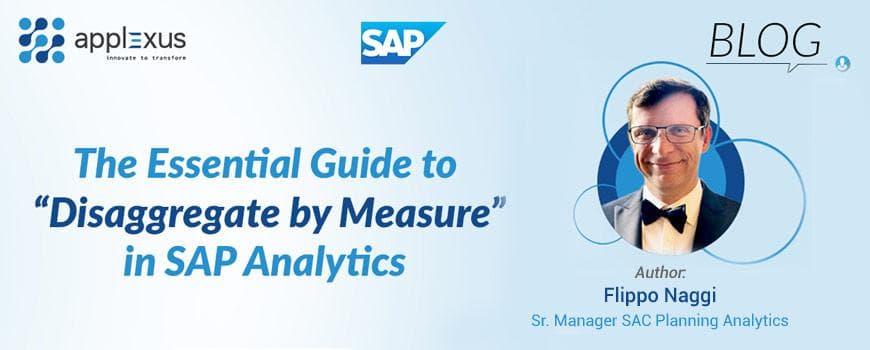How does Artificial Intelligence (AI) assist the Accounts Payable team?
24 May 2022


Sumitro Giri
Associate Director- AI/MLSumitro Giri is the Manager – Marketing & Product Management at Applexus, with expertise in B2B operations, supply chain, and marketing. He has over four years...
The need for modernizing various departments in your business is slowly taking over, alongside the digital transformation replacing the traditional human-led areas of finance. Companies are trying to gradually phase out the legacy processes and empower employees to be more productive and efficient.
As part of this, Artificial Intelligence (AI) is making its presence known, so it was only a matter of time before the Accounts Payable team decided to harness AI to optimize the many backend processes. Using AI, your AP team can easily streamline the invoice processing cycle. Let’s look at what AI has to offer to your Accounts Payable team.
Compared to manual AP operations, AI integrated operations save more than 85% in an average monthly cost to process 5000 invoices - Accounts Payable Procure-to-Pay (APP2P) Network
Pain points in the Accounts Payable (AP) process
AI and Machine Learning (ML) developments are already reshaping the invoice processing cycle. Seeing as the manual processes in place are unoptimized for timely delivery, these protocols rely heavily on humans and have very little room to handle urgent invoice requests. Plus, they lack transparency and are prone to errors that waste even more time and trigger delays.
Too many manual interventions
The dashboard shows the total invoices processed out of the total received so far. Learn how many invoices can an AP clerk handle on average. If the number is high, then it shows your AP team’s capacity to handle a higher volume, but if it is on the lower end, then its time to make some changes around your AP team.
Errors & inaccuracies
Relying on AP clerks leads to errors and inaccuracies that result in duplicate payments, fraudulent payments, and sometimes even loss of invoices, which creates delays and extends the cycle time of invoices.
Lacking internal collaboration
The longer it takes for invoices to be processed, the more likely it is that your AP team is not as productive. Identify any inefficiencies that are slowing down your resources and make changes accordingly. See if you need more AP heads or there are other concerns that have resulted in longer processing and therefore longer payment times.
Missing early pay discounts
In some cases, your cross the early payment date, which results in discount losses, else you go past the due date, which results in fines and therefore overpayments.
Inefficient fraud detection
The likelihood of missing errors earlier in the invoice cycle is always there. These missed errors cause significant discrepancy issues later on, which become hard to detect and resolve.
Mismanagement of exception handling
Inconsistent workflow, the legacy processes in place may mean too many manual touchpoints before approval, inability to handle exceptions, and a longer wait to payment fulfillment.
Lack of digitization
Working remotely and coordinating throughout the invoice cycle isn’t easy for the Accounts Payable team – lack of transparency and visibility.
Static reporting, less analytics
The AP team spends a lot of time compiling, collecting, sorting, and cleaning the data; very little time goes into data analysis.
The role of Artificial Intelligence (AI) in Accounts Payable
Businesses can leverage AI to improve and fasten their invoice processing. The Accounts Payable team will be assisted and, in some cases, relieved of many manual chores; this would improve their productivity and vastly improve their output. Plus, no more late payments, frauds, missed discounts, incorrect entries, and other invoice errors. Manual processes are overwhelming, time-consuming, error-prone, and slow. The tedious processes lead to fatigue and make it hard for the AP clerk to manage and clear bulk invoices. AI-supported invoice processes lead to more invoices being cleared, and that too with better accuracy by the AP department.
30% of businesses still rely on manual invoice processing - IOFM
Businesses want to step away from this and improve the quality of their AP ecosystem – in terms of time, correctness, cost, transparency, and workflow. AI takes the load of the AP department, and that starts to pay more dividends in the long run. Your business frees up capital, improves the bottom-line, and improves its relationship with the suppliers.
How does AI-enabled invoice processing work?
- Receive the invoice via post, fax, or email.
- The AI will extract key values by scanning line items and other sections. Mainly check for bank account details, ordered items from the image invoice, or hard copy.
- If the extraction process does not achieve the required results or exceptions come up, it is sent to AP clerks for a manual cross-examination.
- AP heads manually check the invoice information with Purchase Orders (PO), Goods Receipts, and contract data using either a two-way or three-way validation process.
- AI automatically transfers the invoice information into the unified and centralized system and categorizes the invoices by business units, cost centers, or product categories.
- The next stage involves automated approvals using an advanced workflow to complete the invoice payment.
Top 10 benefits of using Artificial Intelligence (AI) in Invoice Processing?
The entire invoice processing cycle benefits a great deal from AI’s ability to identify documents, classify them, extract information, and deliver or archive them. Essentially, AI allows invoices to be processed faster with fewer errors, fewer touches, fewer penalties, and more early payment discounts, thus improving AP processing.
Nearly 75% of early payment discounts are captured using AI - Accounts Payable P rocure-to-Pay (APP2P) Network
AI also allows for more invoices to be processed in a period of time, compared to the average that an AP clerk can handle. Furthermore, AI also helps to analyze unstructured and semi-structured data, identify patterns in data sets, and automate repetitive tasks to aid in decision-making. This ensures the AP Staff only have to review invoice variances and exceptions.

1. Saves time, lowers effort, and improves productivity
The self-reliant AI can manage most of the processes by itself, without the need for any human intervention. Plus, AI-based data capture solutions are much faster than manual data entry clerks, and that saves you time. Also, AI isn’t susceptible to fatigue that may affect the AP heads now and then.
Repetitive tasks like data entry, matching invoices to additional documents, invoice filing and retrieval, and invoice routing get handled by backend rules. AI and ML algorithms with the support of personalized invoice processing rules can input data, detect and extract data from documents, link data for resolution, and direct documents to the concerned individuals for validation.
The advanced AI can promptly scan every line in an invoice to recognize the details and track the correct spend amount. AP heads, by themselves, are incapable of handling too many invoices in A day. The mid-day exhaustion, breaks, and other distractions make it on an employee to keep a consistent pace throughout the day. However, when automated and assisted by AI, the same number starts to climb. The output out of the finance division will look much higher than usual.
2. More accuracy, fewer errors
When dealing with sensitive financial data, accuracy is pivotal. However, human-oriented manual efforts can become reckless, involve oversight, and are prone to errors. Manual data entry or copy-paste jobs can result in incomplete data as well, that leads to conflicts at a later stage in the invoice processing cycle.
The deep-learning and continually evolving AI and Machine Learning (ML) algorithm extracts correct data from invoices without any manipulation or misread. AI-stimulated automation has the ability to recognize errors, and can verify data within a second to establish the authenticity of a document. This reduces the likelihood of the data going wrong.
3. Scaling the AI algorithm
Most AP clerks have a defined capacity, which fluctuates by a margin of one or two invoice. But, AI, as it evolves and gets better, smarter, and more accurate, will be processing and extracting data from all sorts of invoices at a much higher rate. Over time, the ML will decrease the work for the AP team.
4. Handling exceptions
Most AP teams require AP clerks to process exceptions that don’t follow the pre-set AI-based rules. Exceptions generally include invoices with invalid data, invoices with no receipt, non-PO invoices. But a truly transformed AI invoice solution will provide the perfect path to address these anomalies as well. This ensures you free up your AP heads even more.
5. Analytics for detailed review
AI coupled with analytics will help you take more informed decisions. The AP team can use the AI and ML abilities to translate all the data they collect into actionable strategies in order to uncover lost opportunities, improve productivity, save time, and realize better cash benefits.
Data-driven insights will help to quantify, measure, visualize, and draw inferences of a number of AP parameters like the number of invoices processed per AP head, invoice cycle time, total number of invoices received, number of touchless invoices, and more. This data then helps to either amend your AP procedures or put in place a brand-new AP methodology.
6. More profitable
Business get to leverage AI to unlock much trapped cash from the invoice processing cycle. AI helps to identify opportunities for early payment; AP teams can exploit this to capture early payment discounts, avoid penalties, late-payment interests, improve their year-end cash capital, increase cash flow, and increase profits.
The elimination of paper, retrieval costs, and by reducing the headcount in the AP department, organizations can fully automate the invoice processes and save a significant amount. Your finance division will witness a reduction in labor costs, processing costs, and other secondary charges that lock your cash capital.
7. Forward cash flows
Businesses can also plan ahead for any upcoming payment spikes. The predictive analytics capability of AI can provide more clarity over the possibility that suppliers may request early payment on specific invoices. Your AP team can gain insight into the likelihood of early payment at a specific time of the month.
Knowing this, your Accounts Payable team can ensure they have enough cash available to cover the demand for working capital. They can use of AI’s predictive analytical capabilities to figure out future invoice payments into the cash forecast at a much earlier stage in the purchase-to-pay cycle. This helps companies in cash planning.
8. Helps with compliance
The advanced AI in your invoice processing cycle can quickly identify any fraudulent activity, from duplicate invoices to bogus charges, and log any changes to the invoices. Plus, all the relevant docs are now readily available for anyone from anywhere. Get easy access to a record within seconds, something that would’ve taken minutes.
Organizations can reduce the time and expenses in audit processing. Compliance will need a paper trail, but not if you rely on a product that stores and archives all your invoices and leaves a documented audit trail on a centralized interface. The historical data that is easy to access and retrieve makes the compliance process even more seamless.
9. Recognize any invoice format and avoid fraudulent invoices
At some point, the AP unit of your business will come across an invoice that isn’t valid. This could range from fraudsters pretending to be a new supplier or an existing supplier (supplier impersonation), employees generating made-up charges, inflated invoices, shell companies, and much more.
You cannot rely on manual workers to detect these deceitful attempts in such a scenario. You need an advanced AI system with a compliance module that can catch risk factors associated with fraud, so your AP team has a chance to review these invoices before transferring any funds. Sophisticated AI algorithms can examine patterns to detect any unusual behavior that may indicate a fake document.
With intelligent data extraction and recognition in your AP automation software, the AI can recognize invoices layout in any format and locate the information. The AI and ML can be trained to recognize and extract data from virtually any invoice format. The multi-Channel invoice capture ability makes it easy to scan data from paper, images, PDF files, and more.
10. Improve supplier relationships
In the end, fewer errors, early payments without any delays, better tracking, end-to-end visibility, and overall a better way to regulate your invoice cycle helps you to serve your suppliers better. When suppliers start to see a better value in associating with you, then along-term supplier relationship will no doubt come up at some point.
Final thoughts
Companies are no longer held back by the gravity of legacy models, rigid systems, and slow processes; they wish to embrace innovative new solutions in a bid to streamline their invoice operations. One of the ways to do that is to deploy an AI solution with advanced capabilities to automate and augment your AP processes.
By 2025, 50% of B2B invoices will be processed and paid without manual intervention - Gartner
Deep learning AI equips and assists your AP team in studying invoices much faster, from different invoice formats, without the labor of manual data entry, template creation, and the errors that come with it. AI lets you read and save essential information from invoices with ease and minimizes the involvement of humans. The InSITE invoice processing product for your Accounts Payable team features cutting-edge Artificial Intelligence and Machine Learning to make invoice processing more agile, adaptive, and efficient for your AP team and your suppliers. The intuitive InSITE product effectively addresses automation, analytics, erroneous payment issues, discount capture, exception handling, and much more.












